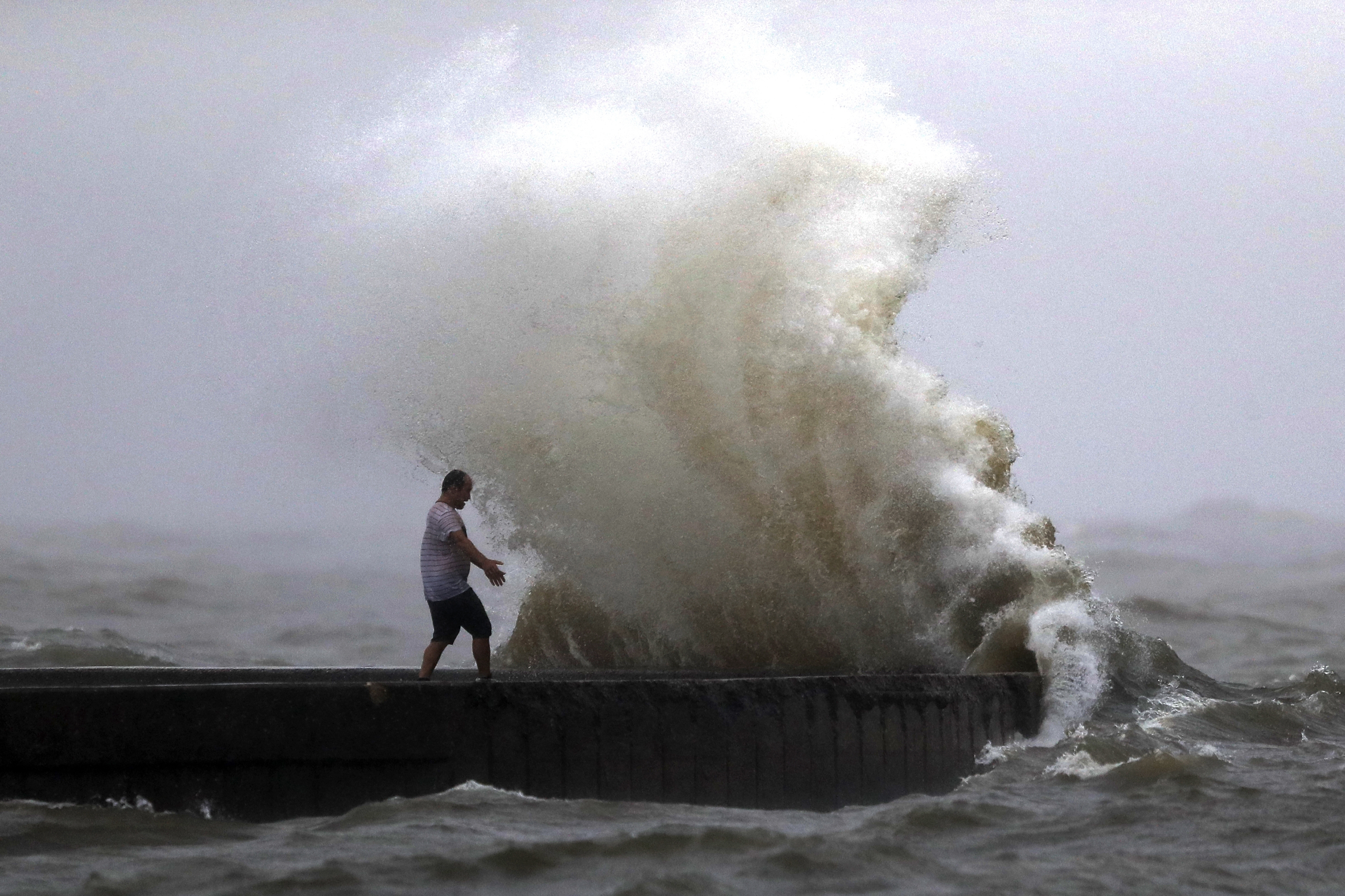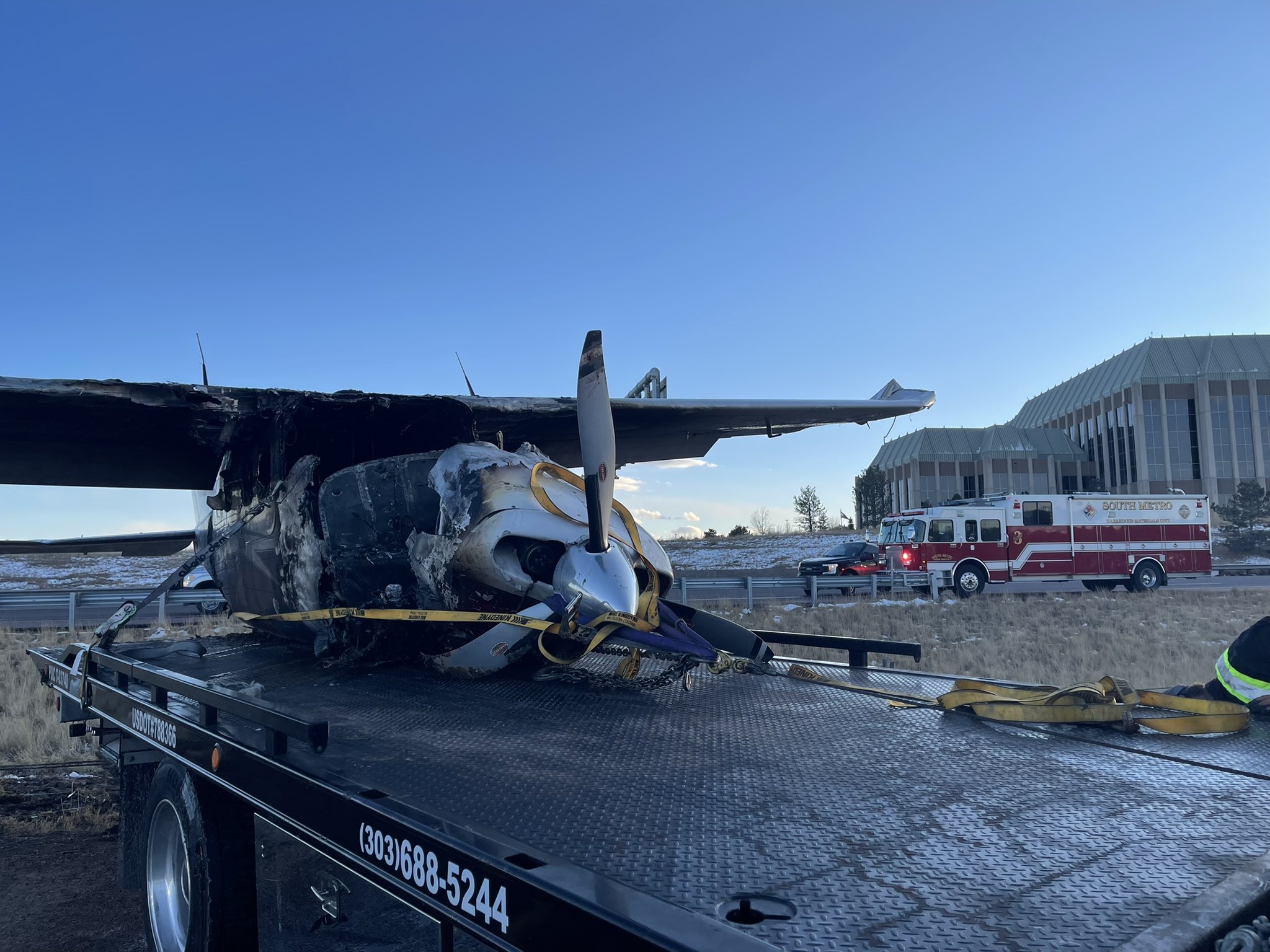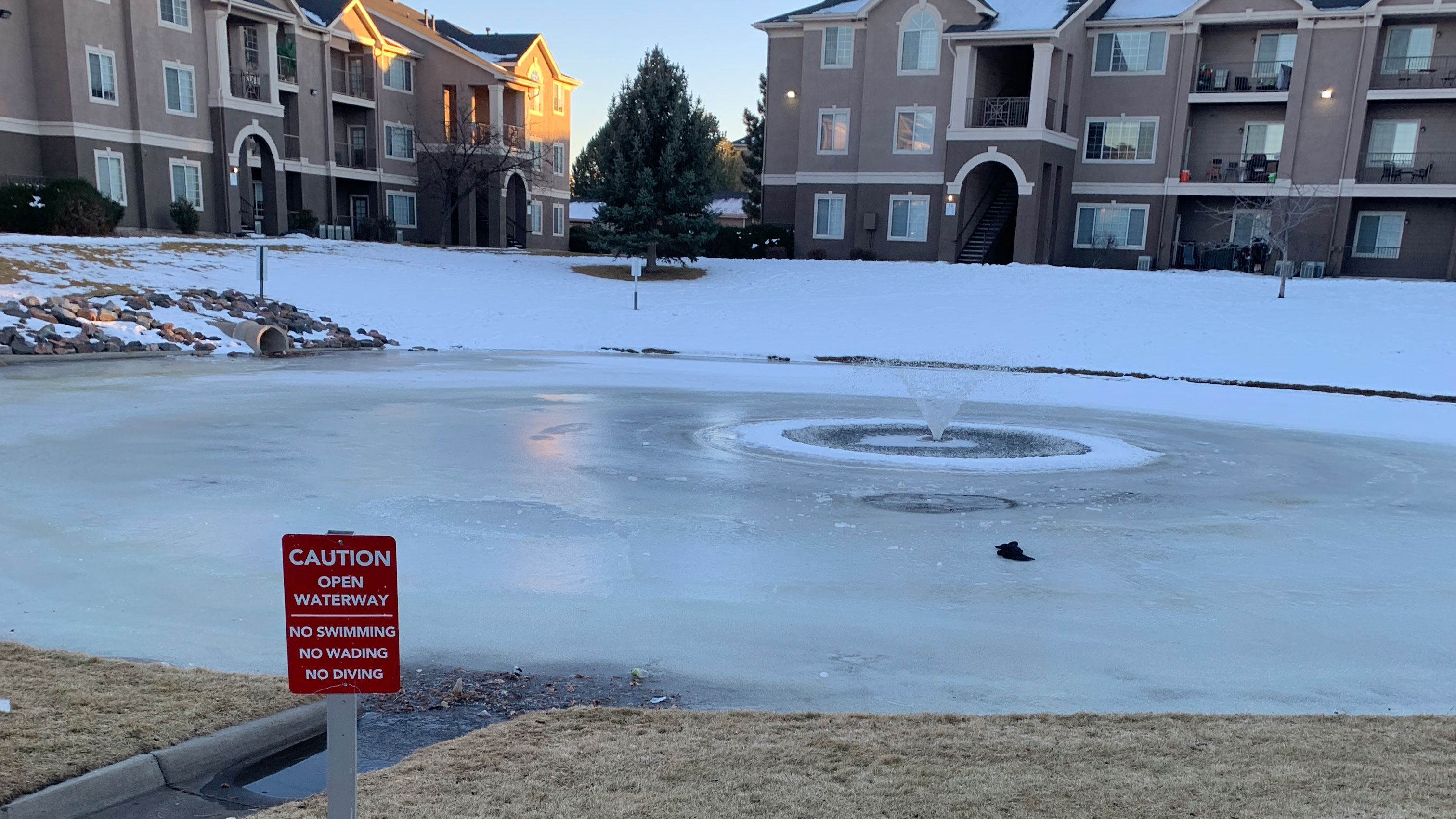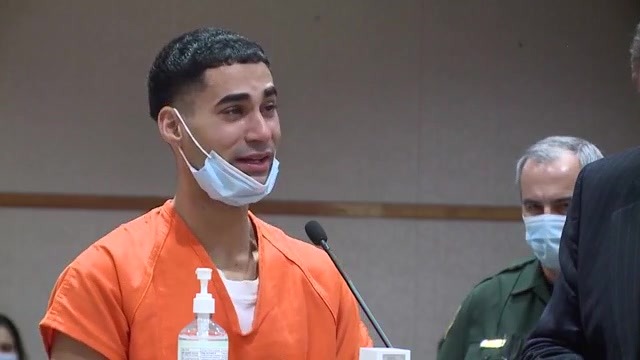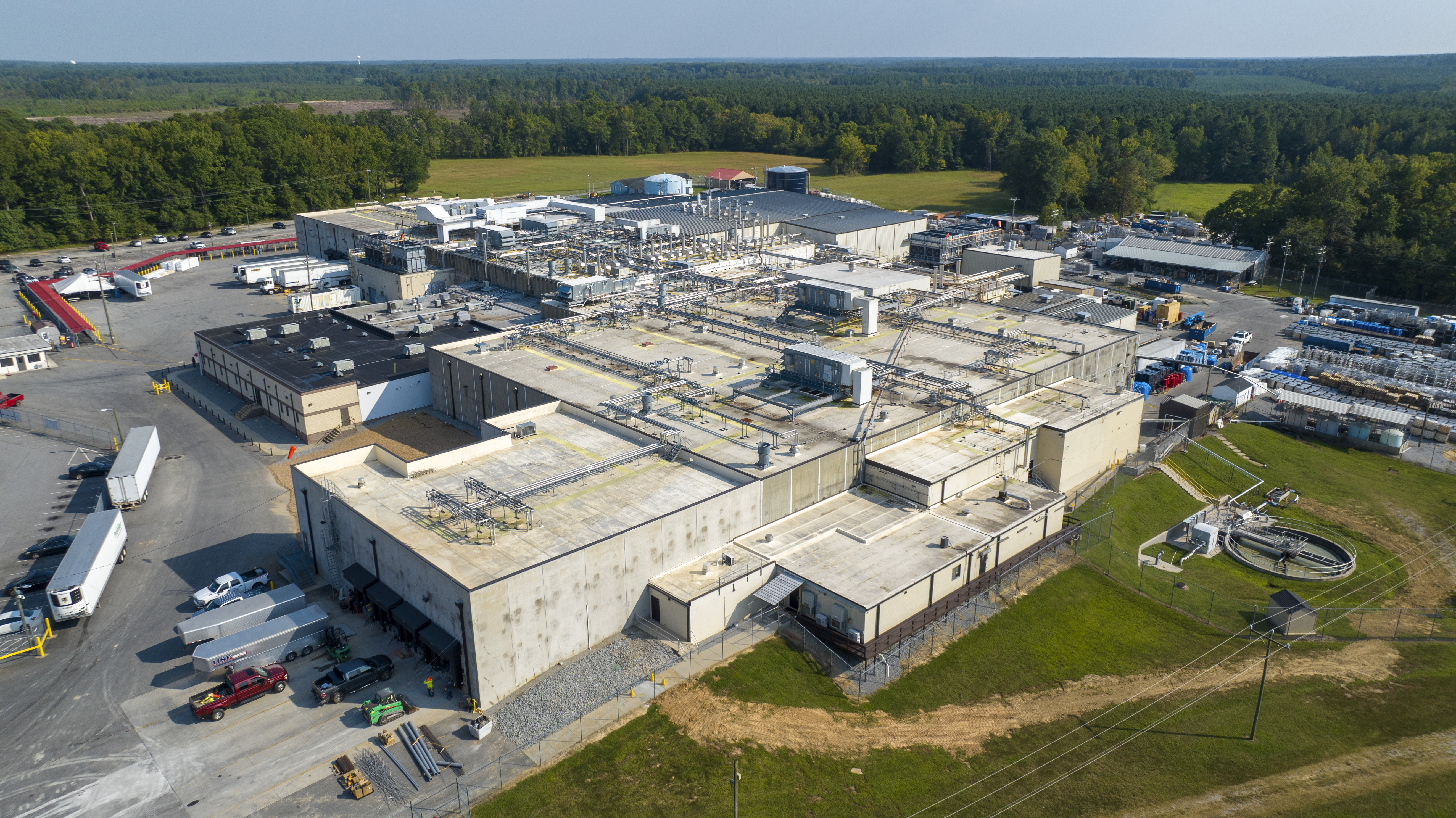VIRGINIA BEACH, Va. (WAVY) — Dominion Energy is investing billions of dollars to change the energy equation in Hampton Roads, Virginia and the United States as a whole.
That includes giving up fossil fuels for the clean energy of wind and sun.
10 On Your Side was recently invited by the energy company to visit the wind farm, which is producing energy for the first time.
The wind turbines stand out in the distance as majestic structures. As you approach underneath you can hear the hum.
27 miles off the coast of Virginia Beach on the Rudee Whaler, Captain Charlie is at the helm. We are the first crew to actually show the wind turbines online and providing energy for the people of Hampton Roads.
It takes about two hours to reach the wind turbine site.
Along the way Christina Trapani, the first mate, noticed a helium balloon made into the number 2 bobbing in the water.
Captain Charlie circles back, and Trapani is ready with the long-extended net to scoop up the balloon that was part of a graduation or birthday celebration. As the balloon comes aboard, the small crew applauds Trapani.
“These things are very dangerous for marine life.”
She would snag more debris on the way back.
Off in the distance you can see Dominion Energy’s Coastal Virginia Offshore Wind project. Two wind turbines are part of a pilot program laying a blueprint for bigger things to come.
“Those blades are turning with the wind and with that motion, they are generating electricity … the fuel for this is wind,” said Kevin Carroll, operations maintenance manager for Dominion. “It is free. It is available. It is clean, and there are really no carbon emissions generating electricity.”
The two turbines produce enough electricity for 3,000 homes, and that electricity runs through undersea cables to an existing substation at Camp Pendleton. This is only the beginning, as there will be 180 of the 14-megawatt turbines. They will start going up in spring 2024, with completion set for two years later.
Dominion’s investing $8 billion in offshore wind, and when complete, the project will provide enough electricity for 660,000 homes.
“They are producing energy that goes through an onshore connection that goes to a switch station, that goes to a substation, and then it is put onto the grid,” Carroll adds.
The grid is located at the Fentress substation in Chesapeake.
The potential routes to deliver wind electricity to Fentress will be determined by citizen feedback during in-person open houses. Here is that information:
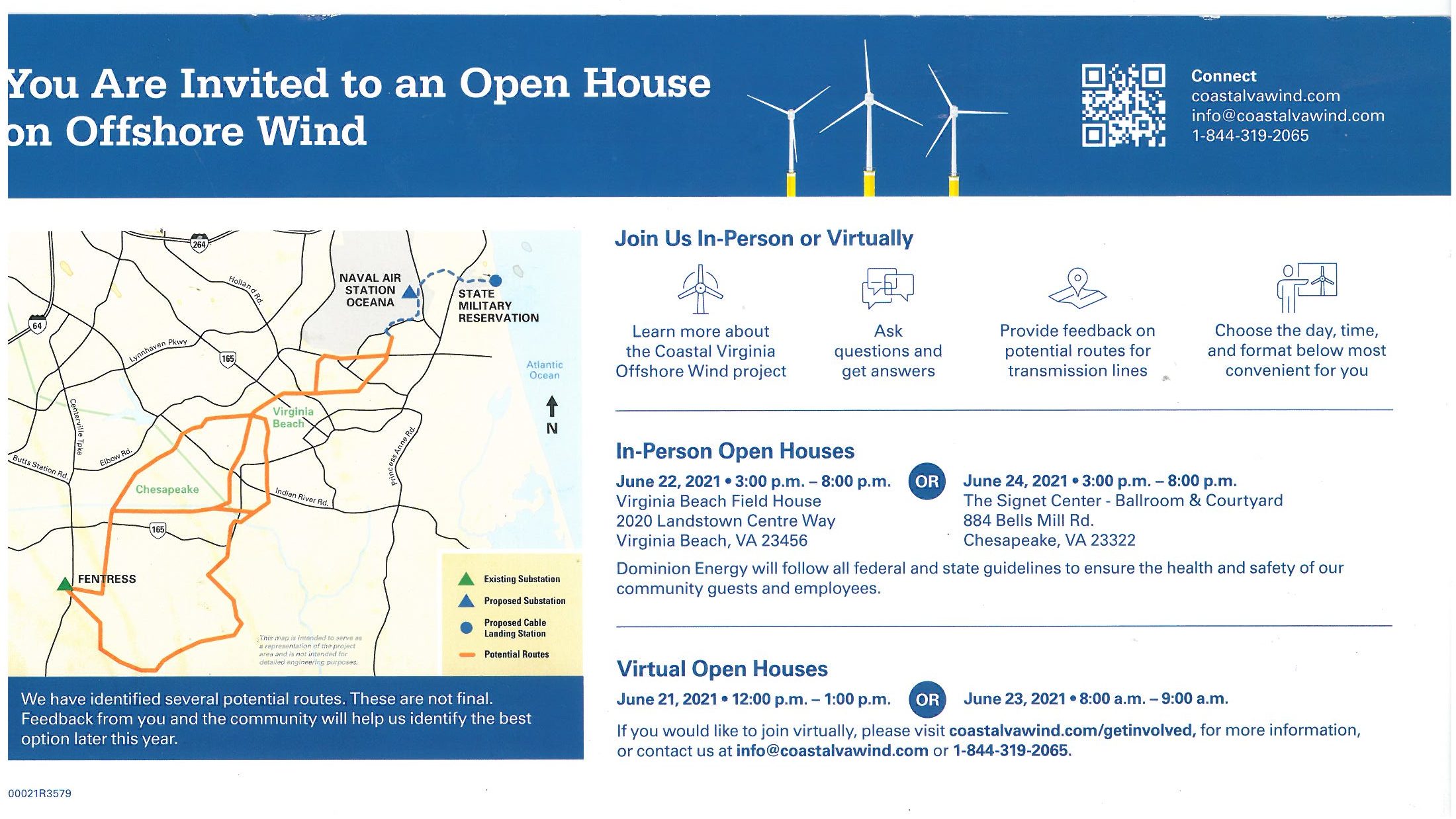
“We want to see what the impact will be for our neighbors,” Carroll adds. “We want to make sure we can bring this energy on shore with minimum disruption to anyone’s lives.”
Dominion says these are the first turbines in federal waters in United States history, and of all proposed wind farms up and down the East Coast, other than a Rhode Island one, the two turbines are the only ones currently online producing electricity.
On Monday, Gov. Ralph Northam’s office announced the project will be among the first in the nation to use a new federal permitting process to speed up offshore wind development by making sure new offshore wind leases are approved in a timely manner.
Northam’s office says the Bureau of Offshore Energy Management (BOEM) and the North Atlantic Division of the United States Army Corps of Engineers (USACE) recently announced a new agreement to give the agencies additional scientific and technical resources to evaluate offshore wind projects.
The initiative was developed in partnership with Old Dominion University and facilitated by the Department of Mines, Minerals and Energy. Retired Col. Paul Olsen, a former USACE Norfolk District Commander, developed the permitting initiative. He serves as the executive director of Programs and Partnerships in the Office of Research at Old Dominion University.
The agreement covers all renewable energy activities along the East Coast, but the initial focus will be on the Coastal Virginia Offshore Wind project and the Kitty Hawk Offshore Wind project in North Carolina.
“With tens of thousands of jobs at stake, we need all hands on deck to get this done for Virginia,” said Congresswoman Elaine Luria (D-Norfolk), who launched the Congressional Offshore Wind Caucus in March. “I’m grateful to Governor Northam for bringing together the Army Corps of Engineers and the Bureau of Ocean Energy Management to expedite the permitting process, and I’m proud to stand with our Virginia Senators to help get this project over the finish line.”
Back on the water, we weren’t the only crew out there that day. Two men on a fishing boat were positioned under one of the turbines, and that is one of the hooks of the project.
It is a fishing destination with tons of fish at the base of the 500-foot monopiles.
“This is Virginia’s project. You are able to come out here, and you can fish the turbines, and actually the foundation acts as an excellent artificial reef.”
And let’s not forget the jobs generated.
“During the construction phase we are going to create 900 new jobs and during the operation and maintenance phase, 1,100 new jobs.”
Who is helping to train the work force?
Centura College in Norfolk will provide 600 certified wind technicians.
“There are multiple type of simulators they will be working on,” said Centura College’s Michael Lanouette who is vice president of administration. “One of them is a learning how to climb a simulation rig system, understanding the different components of the turbines behind me. How the electrical parts work, how the mechanical parts work, how the hydraulics work.”
Carroll summed it up this way: “This is significant because this is a step in a direction where we are looking to eliminate carbon emissions from our grid … this is a big deal because we are bringing clean renewable energy to the Commonwealth of Virginia.”
Dominion Energy wants to hear from you on potential routes to take wind energy from sea to shore and then to the power grid for domestic use.
There will be two in-person open houses on June 22 and June 24.
